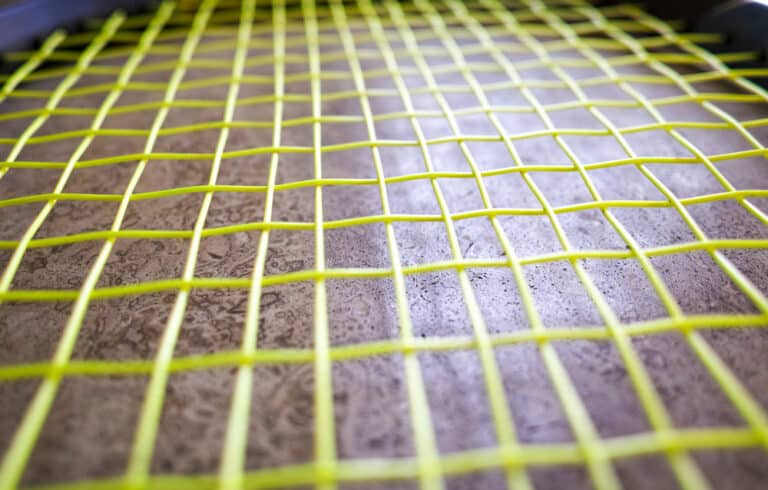How To Prevent Wrist Injuries In Squash?
Wrist pain is nothing new to regular squash players. Wrist injuries have haunted the most talented and well-trained athletes and have often resulted in limiting their career achievements. So, how can you prevent something that seems as inevitable as a wrist injury in squash?
The easiest way to avoid any injury is by being proactive. There are many ways to prevent wrist injuries in squash. It comes down to wearing protective gear (like gloves), warming up properly, preventing overuse injuries by taking breaks between matches, and using proper technique and posture.
Statistically, wrist injuries in racket sports are part of players’ everyday life, whether caused by traumatic experiences or overuse. But how can you best avoid common wrist injuries?
The Best Way To Prevent Wrist Injuries In Squash
There are a few ways to minimize the risk of getting a wrist injury in squash, but most of these tips come down to prevention.
First, it’s best to understand why wrist injuries occur in racket sports – knowing your enemy is the best way to defeat them, after all.
Wrist injuries are one of the most common reasons people need to take a few weeks off from playing. So, why do wrist injuries happen?
Why Do Squash Wrist Injuries Happen?
One study found that participants who partake in racket sports are prone to multiple soft-tissue injuries in their hands and wrists.
These injuries can often be attributed to the ball’s direct impact on the racket’s handle, as well as the continual stretching action that occurs in the wrist.
Injuries are more likely to happen when the limb or joint – in this case, the radiocarpal joint – is in an overextended position.
When the wrist is overextended, the radiocarpal joint is more likely to fail or experience impingement because it’s in a position where all the muscles around it don’t fully support the joint.
Open chain exercises are some of the most effective in increasing muscle power but are also the riskiest when improving performance.
Squash wrist injuries are more likely to happen when:
- The player is overexerting themselves – perhaps through playing against a more advanced player.
- There is no proper warm-up or isolated muscle training to improve the stability and strength of the joint.
- The player uses the wrong equipment (like a heavier racket) and no protective/preventative aids (like wrist straps).
Frequently these are overlooked because players want to become proficient without taking the time to train their bodies. The benefits of playing using open-chain techniques outweigh the potential risk of injury.
Here are some of the benefits of open-chain exercises when performed correctly, preferably under the supervision of a coach or a trainer:
- Increased distraction and rotational forces
- Increased acceleration
- Increased resistance
- Promotes functional activities
- Improved concentric acceleration and eccentric deceleration
But it also results in increased joint and muscle mechanoreceptors deformation and requires trained and strong agonist-antagonist force couples.
It’s essential to look at the gear you’re investing in when looking at common reasons wrist injuries occur.
Squash rackets are built according to the player’s proficiency, level, and strength. Professional rackets tend to weigh more than entry-level ones because advanced players have built the power in their wrists to use them.
While a slight difference in racket weight doesn’t seem like it would impact a player that drastically, the effects of playing with advanced rackets when you’re a beginner can compound significantly.
Wrist injuries are also more common in beginner players than advanced players due to their inability to hit the squash ball with the racket’s sweet spot – the racket’s center.
If you hit the ball outside the sweet spot, a greater shock force travels up the racket and into your wrist.
Missing the sweet spot can also result in the racket spinning, which results in even more stress on the arm.

Most Common Wrist Injuries In Squash
So, you know what causes wrist injuries, but what are the most common types of wrist injuries in squash players?
The first and most common culprit is tendinitis.
Tendonitis is a condition where inflammation occurs where the tissue (tendon) connecting muscle to bone becomes inflamed. In squash, tendonitis is most common in the:
- First dorsal compartment – muscles in this compartment include the abductor pollicis longus and extensor pollicis brevis and are vital in gripping and letting go of an object.
- Flexor carpi ulnaris – a muscle of the forearm that flexes and adducts at the wrist joint.
- Flexor carpi radialis – assists in flexion and abduction of the hand.
- Extensor carpi ulnaris – aids extension and adduction in the wrist.
The individual may also experience ligamentous tears that can result in wrist instability and result in a chronic impairment.
Similarly, the vessels and nerves of the wrist can be compromised by the repetitive blunt force trauma to the wrist and surrounding structures.
What Can You Do To Avoid Wrist Injuries In Squash?
As said before, the best treatment for wrist injuries is to prevent them from happening.
Here are some steps and tips you can follow to avoid overuse and related wrist injuries:
- Use wrist guards or straps – even super basic wrist guards can help to stabilize your wrist and aid in shock absorption.
- Always do a warm-up – this is out of the question; whenever you’re planning to play squash, do a full-body warm-up focusing on the arms and wrists.
- Invest in suitable gear – use the right racket for your grip and wrist strength; oftentimes, specialists will be more than willing to help you find suitable gear.
- Train your non-dominant side, too – having the flexibility of choosing the hand you want to play with will prevent overuse of your dominant hand and ensure that your non-dominant hand can meet the demands.
- Drink enough water while playing – overuse injuries often occur when your body cannot meet the demands of the sport, and one of the most common causes of fatigue during a game is dehydration.
These tips aren’t super difficult to implement into your play and training techniques and will significantly prevent wrist injuries that could stem from playing squash.
Conclusion
Wear and tear symptoms are common in squash due to the challenging demands of the sport.
Wrist injuries have been a bane for many squash players.
Without proper treatment and prevention, the risk of ending your squash career before it even started – so it’s best to go to a doctor or specialist when you notice symptoms of a potential wrist injury.







